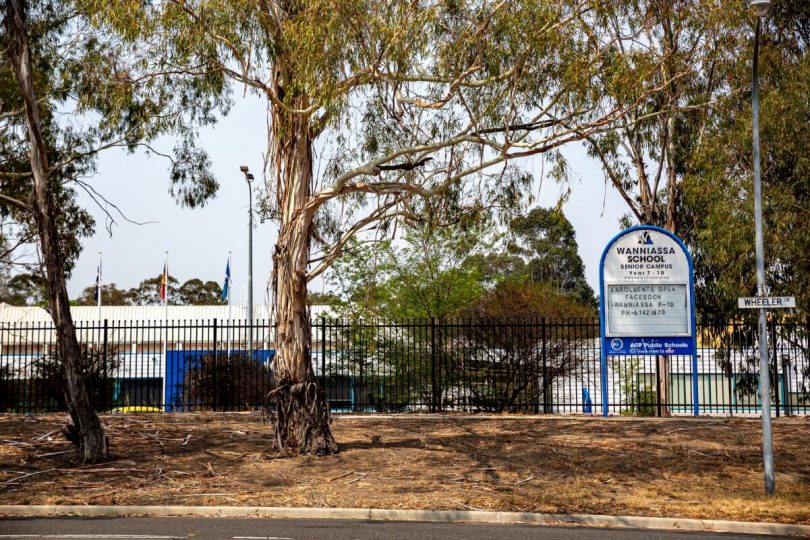
At the end of last year, over 30 schools in the ACT were affected by COVID-19, leading to multiple closures and many students in quarantine. Photo: File.
Managing large numbers of student and staff absences due to COVID-19 intrusions on campus will need to form a significant part of the ACT’s back to school plans, according to the ACT branch of the national education union.
The ACT Education Directorate said back-to-school plans are still being finalised, but many elements of last year’s COVID-safe plans will carry over.
Mandatory vaccination of staff in some settings, cohorting of students and mandatory mask-wearing will all remain in place, as will a host of other measures designed to limit transmission of the virus on school campuses.
A spokesperson for the Directorate could not confirm if a rapid antigen testing regime would be used in schools to test either students or teachers.
During term four of last year, more than 30 schools in the region were impacted by COVID-19 intrusions, affecting staff and students.
The majority of these intrusions were of the less-transmissible Delta strain.
At the time, no children under the age of 12 could be vaccinated so students were required to undertake a full 14-days of quarantine if identified as close contacts.
Half of all school-aged children will go back to school at the end of the month with a first pediatric Pfizer jab, but none will have received two doses by the time students return to school on Monday, 31 January and Tuesday, 1 February.
The Education Directorate spokesperson said the ACT Government is currently engaging in discussions at a national level to ensure certainty about the return to school in all jurisdictions.
Queensland has already pushed the return to school back by two weeks, but Prime Minister Scott Morrison has urged other jurisdictions not to follow suit.
National Cabinet is meeting today (13 January) to discuss expanding return to school guidelines. The Australian Education Union and the ACT Government will also meet to discuss the return to school and how to address staff shortages and free RAT kits and food shortages.
AEU ACT branch secretary Patrick Judge said the two critical issues in the lead up to returning to school are how to cope with large numbers of staff absences and how to manage large numbers of student absences due to COVID-19.
The union wants to see teachers prioritised for access to rapid antigen tests and PCR testing, especially if teachers are classified as an ‘essential’ workforce.
Mr Judge said it’s a balancing act between following health advice and ensuring appropriate delivery of education programs.
He also noted that students who are required to quarantine but are not unwell should be able to access some form of remote learning.
“Large numbers of staff absences will also make … the COVID-safe delivery of education more challenging, especially if we have to look at measures like having higher ratios of students to teachers or alternative delivery methods.”
He noted there simply is not the availability of staff to come in and backfill teachers required to quarantine, and while it may be possible to deploy some staff from one school to another, it’s more likely that school programs will have to be adjusted so they can be run with fewer teachers.
Mr Judge said the time for planning for these eventualities is now.
“All of our members are worried about the impact of the last two years and the ongoing pandemic on their students,” he said.
“The effects of these sorts of disruptions are the worst for the students who need the most help and are the most vulnerable as they will find it the most difficult to catch up.”




















